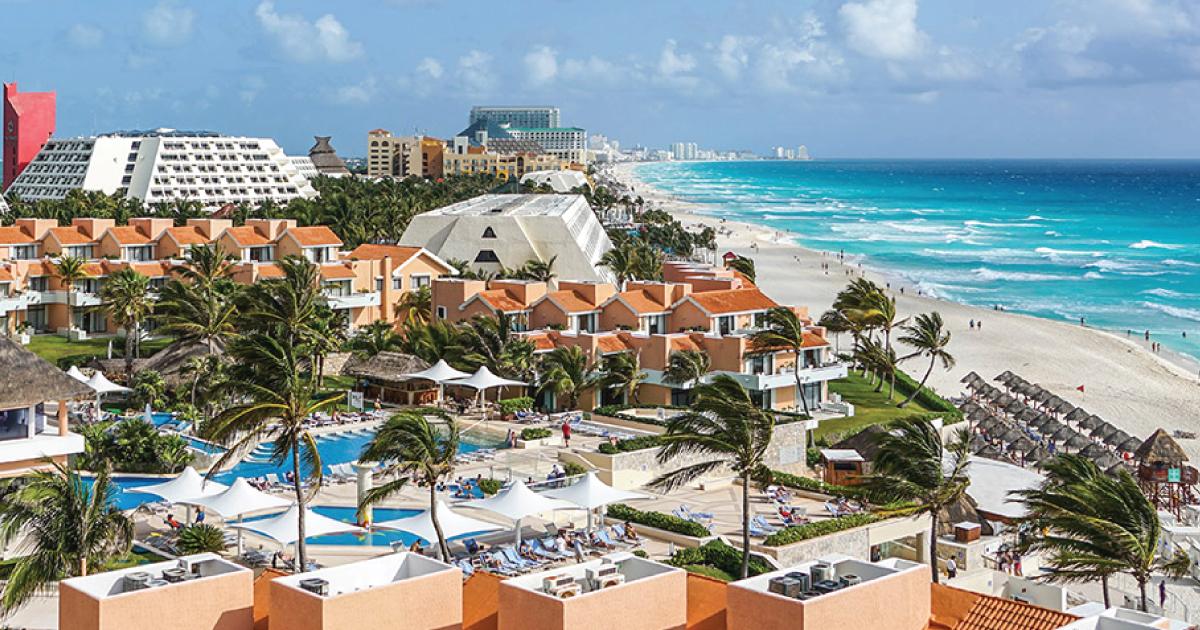Mexico’s new government has dissolved the country’s once robust tourism board, and planners and suppliers there are feeling anxious about their new challenge.
Perhaps the most-spoken phrase regarding governments around the world these days is “elections have consequences,” and nowhere is that more true than in Mexico, where newly elected President Andrés Manuel López Obrador has closed the tourism board, or Visit Mexico, as is popularly called.
The new president took office Dec. 1, 2018, and within a week the country’s newly appointed secretary of tourism, Miguel Torruco, had confirmed the Tourism Promotion Council of Mexico (CPTM), the entity that funded the tourism board—which had more than 20 offices in major cities around the world and also provided matching funding to individual destination marketing organizations (DMOs) to promote their cities and regions—would be shut down quickly.
The new government is closing tourism board offices, which included a key office in Washington, D.C., that brought a large amount of association and corporate meetings, incentives, conventions and exhibitions (MICE) into Mexico. The tourism board also had offices in New York, Los Angeles, Chicago, Miami, London and major cities in Canada, Europe, Asia and South America, which Torruco said would be “liquidated” as soon as possible, with their mission of marketing Mexico to both tourists and the MICE market to be taken up by employees in the Mexican government embassies around the world.
Planners and supplies across Mexico were not timid about expressing their disappointment and in some cases anger about the abrupt change, saying that it will be difficult going forward for Mexico to maintain its position as the sixth-most-visited country in the world.
“First of all it’s very sad that after so many years with Tourism Mexico working—working very well—it’s shut down by the new government. It’s just sad,” said Michel Wohlmuth, president of the MPI Mexico Chapter and CEO of Creatividad, a Mexico City-based meeting and event planning company. “I don’t agree with those in our industry who feel that it’s the end of the world—it’s not—but Tourism Mexico did a very good job promoting Mexico throughout the meetings and events industry. A private sector organization will emerge to do the job.”
But with the vacuum that exists with the closing of the tourism board, Wohlmuth sais the tourism industry in the country will lose time in what should be a daily job of marketing itself worldwide.
“I have talked to the minister of tourism and what I still don’t understand is why it would be shut down before there is anything there to take its place—we are going to lose time; and I don’t know how much time before there is anything there to take the tourism board’s place,” he said.
One of the more skeptical suppliers is Andy Ortiz, president of Global Incentive DMC of Cancun, a past president of the MPI Mexico Chapter and a 25-year veteran of the industry, who said he think the staff of the Mexican embassies assigned to market the country to the tourism industry are likely to be “clueless, especially when it comes to marketing to the MICE industry.”
”It’s not just about handing out brochures,” Ortiz said. “It’s about knowing the players, knowing who MPI is, knowing who HelmsBriscoe is, knowing the president of Maritz. It’s about knowing the major players like the people at the Mexico Tourism Board have for the past 20 years. That’s what keeps room nights coming. Mexico will be losing room nights from this change.”
The timing of the dissolution of the Mexico Tourism Board so quickly after Mexico’s new president took office has Ortiz convinced that no significant analysis of the tourism board’s effectiveness could have taken place before the plug was pulled on it.
“If a study was done before deciding that we don’t need the Mexico Tourism Board anymore, that would be one thing—but it doesn’t seem like a detailed study could have happened,” he said.
But there is hope in the MICE community in Mexico from veterans like Eduardo Chaillo, CMM, CMP, CASE (MPI Mexico Chapter), global general manager for Latin America at Experient/Maritz Global Events.
“Of course I’m not happy with this because it takes a long time to build trust and establish the position of the country, which is what the Mexico Tourism Board worked at every day; I should know because I ran the Washington, D.C., office for six years and was in charge of the MICE program,” he said.
But Chaillo said he is optimistic because he thinks a new, private-industry-driven organization will emerge quickly.
“I see this as an opportunity for the private sector tourism community and individual destinations within Mexico to come forward and take the leadership position,” he said. “This will be the new way of marketing Mexico tourism, particularly the meetings and events segment. They need to come to the table with ideas, with Investments, with aggressiveness, and put themselves in the position and moving marketing of Mexico forward. I think a lot has been done with the brand, but not necessarily connecting with all of destinations at all that needed to be connected.”
Chaillo said the organization most likely to take the lead in this process is COMIR, “which is the equivalent of the Events Industry Council in the U.S. They should in my opinion take the leadership role in the industry, and of course ask for the support of the new minister, but guide the process as the leaders of the new strategy.”
COMIR (an acronym for the Spanish words for “Mexican Council of the Industry of Meetings”) is composed of 11 trades associations including the Mexico chapters of MPI, PCMA, SITE, IAEE, the Mexican council of ICCA, and the national association of venues and the national association of DMOs.
Chaillo said that representatives of this group have already been meeting with the new tourism minister, Miguel Torruco, who Chaillo said is a very knowledge and longtime industry member who has a good understanding of both the leisure travel and MICE industries.
Wohlmuth, who has met with Torruco, concurs, saying, “He is from our industry and understands it.”
Chaillo said it’s not as if the industry suddenly needs to rebuilt in Mexico; it just needs a new, big-picture marketing entity.
“We have everything to offer in Mexico—wonderful beaches and destinations, massive tourism infrastructure with great hotels; it’s not as if we have to start over from scratch,” he said.
Chaillo said groups interested in booking Mexico can contact the highly functional DMOs and DMCs in various major resort cities like Los Cabos or Cancun. And there are also numerous big-brand hotel companies like Marriott who do a robust job of marketing their Mexico properties and offering turn-key planning for MICE groups.
And he does not think it will take long for a new, unified private sector marketing entity for Mexico MICE events to emerge, saying that needs to happen in the next month or so.
Torruco has said closing is part of an austerity move by the government but also has said plans are under way to use the money to build a new, 1,500-kilometer Maya Train, which would connect cities in the Yucatan peninsula with archeological sites.
Dario Flora, CEO of the Quintana Roo Tourism Board, a newly formed DMO that unifies the marketing for all destinations in the Mexican state of Quintana Roo, which includes Cancun, Cozumel, Isla Mujeres and the Riviera Maya, said it will be a challenge for DMOs to up their marketing game while losing the subsidies that the government of Mexico provided as matching funds.
“But we are experiencing a new reality, and we will adjust to it,” he said.
Industry Professionals React to the Closing of Mexico’s Tourism Board
Mexico’s new government has dissolved the country’s once robust tourism board, and planners and suppliers there are feeling anxious about their new challenge.
January 21, 2019

ADVERTISEMENT
ADVERTISEMENT
YOU MAY ALSO LIKE
Members of the MPI Foundation Global Board of Trustees discuss why they’re passionate about the mission and highlights from their involvement.
This seventh edition of the Incentive Travel Index reveals an industry that remains resilient and inventive but faces growing complexity. Incentive travel is as valued as ever, yet the business of delivering it grows tougher each year.
Course correcting the swift and widespread recent adoption of AI in everything, behavioral science advisor Nathalie Nahai shares the perils and potential of AI and its impacts on human empathy in advance of her IBTM World (Nov. 18-20) keynote, “The Power of Human Connection & Empathy in the Age of AI.”
Discussing the importance of resetting the nervous system during times of stress, connecting with your team on a personal level and why the events/wellness connection is more important than ever with Kelly Gleeson Smith, senior vice president of sales, Caesars Entertainment National Meetings & Events.
A conversation from IMEX America with Michael Massari, chief sales officer for Caesars Entertainment, about how events have (and haven’t) evolved in recent years, an industry with many generations and the impact of AI.






